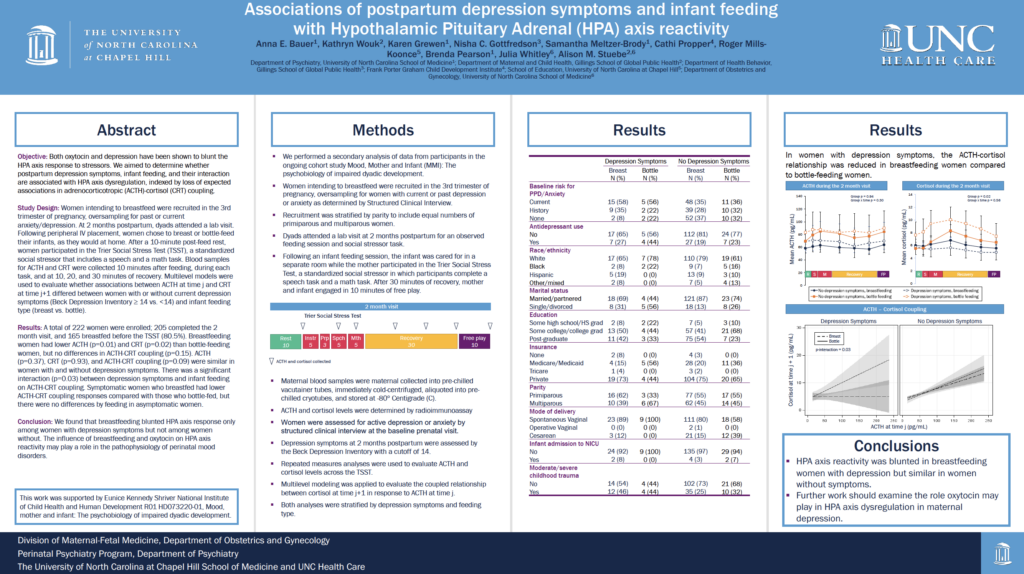Presented at The Pregnancy Meeting, Grapevine, TX
Anna E. Bauer, Kathryn Wouk, Karen Grewen, Nisha C. Gottfredson, Samantha Meltzer-Brody, Cathi Propper, Roger Mills-Koonce, Brenda Pearson, Julia Whitley, Alison M. Stuebe
Objective: Both oxytocin and depression have been shown to blunt the HPA axis response to stressors. We aimed to determine whether postpartum depression symptoms, infant feeding, and their interaction are associated with HPA axis dysregulation, indexed by loss of expected associations in adrenocorticotropic (ACTH)-cortisol (CRT) coupling.
Study Design: Women intending to breastfeed were recruited in the 3rd trimester of pregnancy, oversampling for past or current anxiety/depression. At 2 months postpartum, dyads attended a lab visit. Following peripheral IV placement, women chose to breast or bottle-feed their infants, as they would at home. After a 10-minute post-feed rest, women participated in the Trier Social Stress Test (TSST), a standardized social stressor that includes a speech and a math task. Blood samples for ACTH and CRT were collected 10 minutes after feeding, during each task, and at 10, 20, and 30 minutes of recovery. Multilevel models were used to evaluate whether associations between ACTH at time j and CRT at time j+1 differed between women with or without current depression symptoms (Beck Depression Inventory ≥14 vs. < 14) and infant feeding type (breast vs. bottle).
Results: A total of 222 women were enrolled; 205 completed the 2 month visit, and 165 breastfed before the TSST (80.5%). Breastfeeding women had lower ACTH (p=0.01) and CRT (p=0.02) than bottle-feeding women, but no differences in ACTH-CRT coupling (p=0.15). ACTH (p=0.37), CRT (p=0.93), and ACTH-CRT coupling (p=0.09) were similar in women with and without depression symptoms. There was a significant interaction (p=0.03) between depression symptoms and infant feeding on ACTH-CRT coupling. Symptomatic women who breastfed had lower ACTH-CRT coupling responses compared with those who bottle-fed, but there were no differences by feeding in asymptomatic women (figure).
Conclusion: We found that breastfeeding blunted HPA axis response only among women with depression symptoms but not among women without. The influence of breastfeeding and oxytocin on HPA axis reactivity may play a role in the pathophysiology of perinatal mood disorders.

